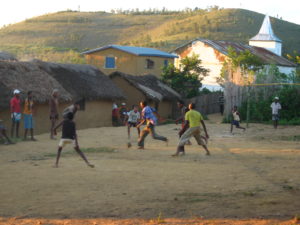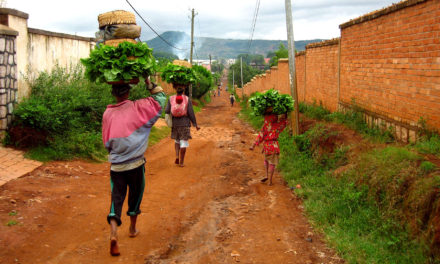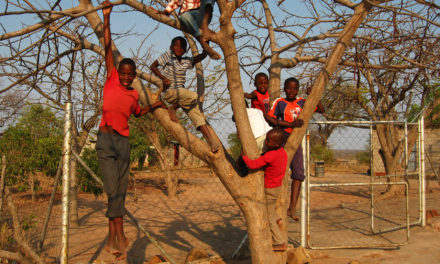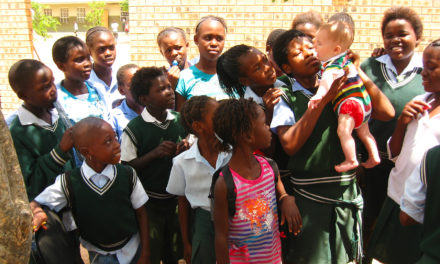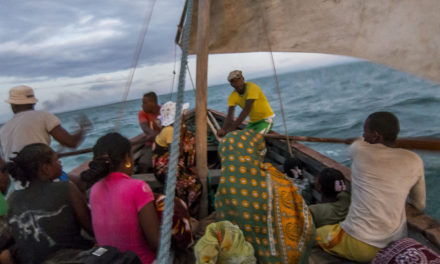When you go to another country, especially a hard-to-reach and mostly undeveloped one like Madagascar, you sometimes expect everything to be different. And so when you find a few things that are similar to what you already know, it can sometimes be comforting, even things as simple as the availability of Coca-Cola (for Lora) or French pastries (for me). Some things, like Coca-Cola, are apparently pretty much universal no matter where you are on earth.
When we go to different churches in different towns and villages in Madagascar and they all have many similarities with churches we already know and understand, it can be very reassuring. It’s nice to recognize the church buildings, the praise and worship time, the preaching time, the testimony time, the offering time, the pastor, the choirs, etc. Inside these churches, it’s really only a few minor things that are different from what we’re used to; sometimes the only real difference is the language the service and songs are conducted in.
To be able to immediately recognize all these things as “church”, as a gathering of Christians for worship and learning, can be refreshing in a place where so many other things are drastically different. Even a short-term visitor can be quickly reminded that we’re all part of a “universal Church” that stretches past national, ethnic, and language boundaries. And that’s a nice reminder.
After all, in John’s Revelation, he saw as part of the church “a great multitude that no one could count, from every nation, from all tribes and peoples and languages.” (7:9) And when we visit different countries and are able to quickly recognize other churches, even in a different language and with people of a different ethnicity, aren’t we seeing the same thing John saw?
I don’t know… maybe. But really, I don’t think so. As I said, pretty much everything else in the culture is drastically different from the Western world, so why should their churches look and act the same as ours?
And it’s not as simple as appearances either. The thing is, Malagasy churches look good on the outside, especially to visiting Westerners like us: their buildings are usually some of the nicest buildings around (and always are if it’s a rural area), they have several services throughout the week and membership is generally very high and consistent. The major denominations in Madagascar are even highly influential in government and politics.
But most Malagasy churches are rotting on the inside. The most immediate and obvious example is the denominational bickering and fighting. Church denominations in Madagascar are used to perpetuate ancient class differences and oppressive systems that consider some groups of people as “nobility” and others as “slaves”, and they also strengthen tribal and political differences that often result in blackmail and even sabotage of church property and property of church members. And it’s not one-sided: nearly all Malagasy denominations participate in these very un-Christ-like behaviors and attitudes.
When you look even deeper though, you find something else, just as bad or worse. Traditionally, most Malagasy people have feared and worshipped their ancestors, relying on them as intermediaries between themselves and God the Creator, believing their ancestors to be the primary rulers of all things spiritual and physical, attempting to please or appease them throughout their everyday lives, and with great fear of a dangerous or even lethal reprisal if even a very minor (and possibly unknown) taboo is trespassed. At scheduled intervals, ancestors are even dug up from their graves and elaborate celebrations are held in their honor, with time being taken to share any news with them and show them any expansions of the village or town.
I don’t think these internal problems of Malagasy churches are entirely their fault either. I guess it’d be nice and easy to blame them (after all, none of us Westerners worship our ancestors, right?), but I don’t think that’s where the blame lies. I think the problem is that most, maybe all, early missions efforts in Madagascar focused on bringing the “church” to the Malagasy people. Since they were Westerners (mostly French, Dutch, and British) bringing the church, they brought a Western-style church. And really, they were pretty successful at what they did. But for most Malagasy, ancestor worship isn’t just tradition; it’s just as much a part of their lives now that they’re “Christians” as it ever was before. That’s what’s called “syncretism”: an un-critical and often contradictory combination of former religious beliefs and practices with newer “Christian” ones. Many Malagasy people attend church because they believe their ancestors want them to, and if they disobey, then they risk punishments such as illness or infertility or crop failures. It’s even the same motivation for many Malagasy church leaders. Deceased ancestors run the show for most Malagasy people in Madagascar, including Malagasy “Christians”. And that’s obviously not Christianity, no matter what the outside looks like to a passing Western visitor.

A typical family grave in Madagascar, more sturdily built, more costly and more decorated than their own homes – all to be sure their ancestors are pleased and don’t curse them.
All towns and cities in Madagascar and most of the villages in a decent radius around the towns have churches, usually of multiple denominations (generally representing the different nationalities of early missions efforts). And the churches have been pretty well maintained, even enlarged in physical size and membership. And as I mentioned, they’re still very much recognizable as churches to us Westerners and probably to anyone from anywhere in the world. So I think early missions efforts, inasmuch as they attempted to bring the “church” to Madagascar, were very successful.
But the problem is that “church” doesn’t save anyone. And when what people need is liberation from a fearful bondage to ever-present ancestors that can curse or bless them at a moment’s notice depending on well-followed or accidentally overlooked taboos that are based entirely on their ancestors’ unforeseeable personal whims, well, in that situation, a Western-style church doesn’t even have that much to say. As I said, we don’t deal with that. And so when a Western-style church is what’s brought and emphasized, it just makes sense that the result would be some weird mix of outward Western style and structure and an underlying or untouched core of oppressive traditional beliefs and practices.
The church doesn’t save anyone. Jesus does. If our missions or ministry efforts are to bring our own cultural style and structure of church to people of a different culture, then we’re not only neglecting to meet the people where they’re at, but we’re also subjugating them to a new form of colonialism (a.k.a. “cultural imperialism”). Church as an institution or organization isn’t the “good news” that Malagasy people would like to hear, but instead they need some way to be free of ancestors and spirits and their accompanying taboos, something to liberate them from a limited life and release them to an abundant one. Only Jesus can do that.
So I think missions efforts should be focused on the core of the “Good News”: Jesus crucified and resurrected to establish our reunion with God and each other. And the forms and structures that have developed around that in our own cultures should be left in our own places of worship back home. The Malagasy church should be free to develop something more appropriate to their own way of life, their own cultural structures and forms of worship and expression and teaching, something that speaks to every aspect of their lives; something that’s not just an outward Western addition.
I don’t know what that would look like in the Malagasy church. I imagine there will still be some strong similarities to some of the most positive parts of our own churches; the results of Jesus’s commandments to love our God with all our heart, soul, and mind, and to love our neighbors as ourselves will probably be noticeable no matter what cultural forms they take. But some things will probably look significantly different. After all, many cultures organize themselves and their communities in very different ways than we do, worship in very different ways than we do, and teach and share thoughts and information in very different ways than we do.
If a church, a group of people attempting to follow Jesus, isn’t allowed to do these things in accordance with their natural cultural forms, then they’re likely to be pushed into syncretism or completely unreached altogether. During our time in Madagascar, we met one man who’s been leading some church-planting efforts in rural areas of eastern Madagascar for about ten years now. He told us that most of the churches they’ve started have no buildings at all. And he said, “why should they? People don’t worship their ancestors in buildings or do their rituals for possession or sacrifices in buildings, so how can the church affect that area of their lives if it’s centered around services inside a building?”
Many, maybe even most, people in Madagascar have never heard about Jesus in a way that speaks to the most important areas of their lives. Recent reports suggest that as much as 55% of the population (or about 11 million Malagasy people) still haven’t heard the good news. There are very many, mostly in villages that can only be reached by walking and not by any kind of road, who’ve never heard the name of Jesus at all. It’s our desire and our hope that we can return to Madagascar next year and be part of God’s work to reach these people. We want to help lay the foundation for a Malagasy church that’s centered firmly on Jesus and that naturally develops its own cultural forms of worship, structure and doctrine that can speak to every aspect of Malagasy life.
I don’t think this can be quick, and it won’t be easy. I don’t think it would even be possible if we were relying on ourselves as Westerners to do it. Our own culture is too much a part of us. But if we rely on the Holy Spirit to draw people to Jesus, to liberate and establish them in his work, and to give them the freedom to worship and follow him in culturally meaningful ways, then it can be possible. And then we can see the same church that John saw in his Revelation: “a great multitude that no one could count, from every nation, from all tribes and peoples and languages.”

